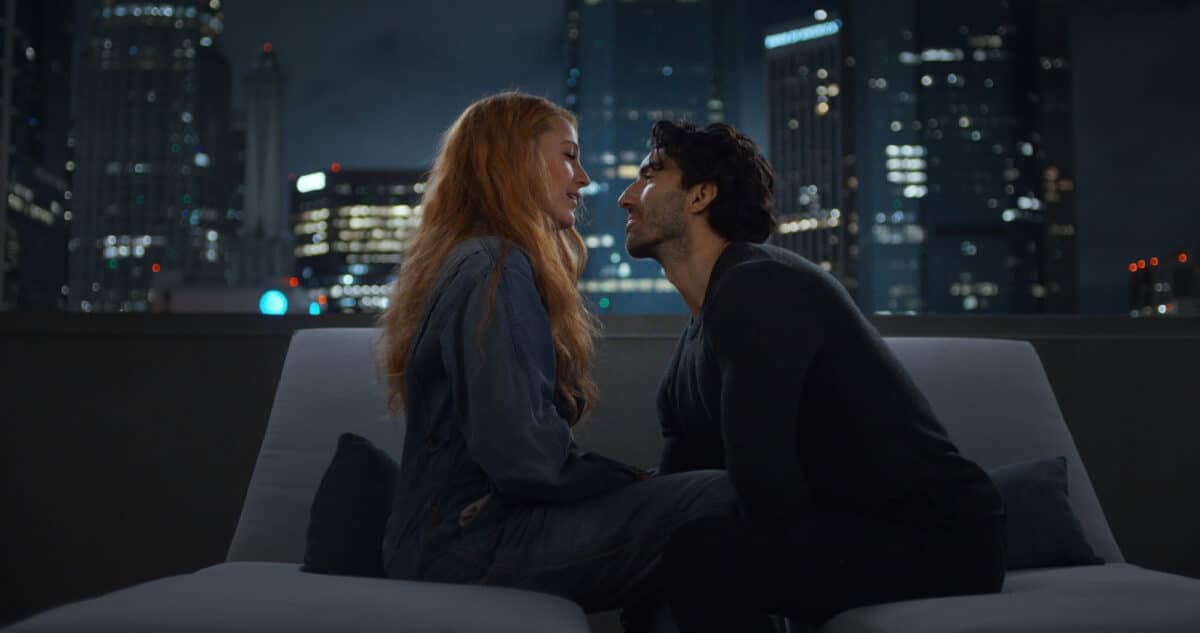‘It Ends with Us’ is a reflective portrayal of spousal abuse

Blake Lively and Justin Baldoni star in “It Ends with Us”
(Trigger warning: mentions of domestic violence)
This is not a love story, but it is a story about love. “It Ends with Us” is often marketed as a romantic movie, and this becomes a problem for a narrative that tackles domestic abuse. However, even if this should not be perceived as a romantic flick, it is still subject to generous introspection on how complicated love can be and how secluded domestic violence can feel, not just to the people involved but also those outsiders who tend to question why individuals can’t just leave an abusive relationship.
“It Ends with Us” is a film adaptation of the best-selling novel of the same title by Colleen Hoover. It follows Lily Bloom (Blake Lively), who falls in love with Ryle (Justin Baldoni), a neurosurgeon. As the two progress in their relationship, Lily discovers that Ryle is just a replication of a childhood trauma she has been trying to escape from—a pattern of abuse she longs not to re-create.
If you’re one of those who read the book, you know how it goes: a girl falls in love with a man who turns out to be not the person he’s trying to portray, as he unveils hidden, terrifying parts of him that hurt you mentally and physically. In other words, it is a portrayal of how someone who’s aware of your trauma still finds a way to inflict another one on you despite their claims of love and promises of “forever with you.”
The film remains true to the book, sticking with the facts and emotions from its source material. The portrayal depicts domestic abuse in a way that is raw, honest and gut-wrenching. There is the “casserole scene” which will take the audience’s breath away as the impact is felt from the screen in a way an outsider feels when they witness domestic violence right before their eyes.

The movie will also take its viewers on a vision of what it feels like to fall in love with someone who happens to be abusive, how abusers are not one dimensional monsters but an entire complexity on their own, and why it can be so hard for victims of domestic violence to immediately walk away from that kind of mistreatment as it is camouflaged in an image of deep affection.
Lively and her co-actors did what they could at their disposal — they complement one another on screen. The love, the disgust, the anger and the pain are demonstrated the way they should be. People who have not been in an abusive household or relationship often wonder and ask, “Why can’t these victims just leave?” “It Ends with Us” attempts to give an answer to why victims grapple with letting go and holding on and how outsiders should sympathize, even if they’re related to the abuser.
If there’s one thing that’s missing in the movie, it’s that it failed to incorporate a significant conversation with Lily and her mother in the book that shows how a cycle of abuse or trauma resonates and passes along within the closest knit and how it can be abolished with the help of the same people who experienced it.
Nonetheless, “It Ends with Us” offers the takeaway to not romanticize abuse and for outsiders to give significant compassion to the victims and not judge them for their inability to immediately walk away from their abusers.
Most importantly, “It Ends with Us” shows how liberating it can be to finally walk away from violence and accept that love is not enough to fix a person and that the love that people deserve is the one that does not hurt and does not push you to the limit of your pain tolerance; it is the love that gently hugs you into a bubble of comfort that makes you sleep peacefully at night.
“It Ends with Us” premieres in Philippine cinemas on Aug. 7.